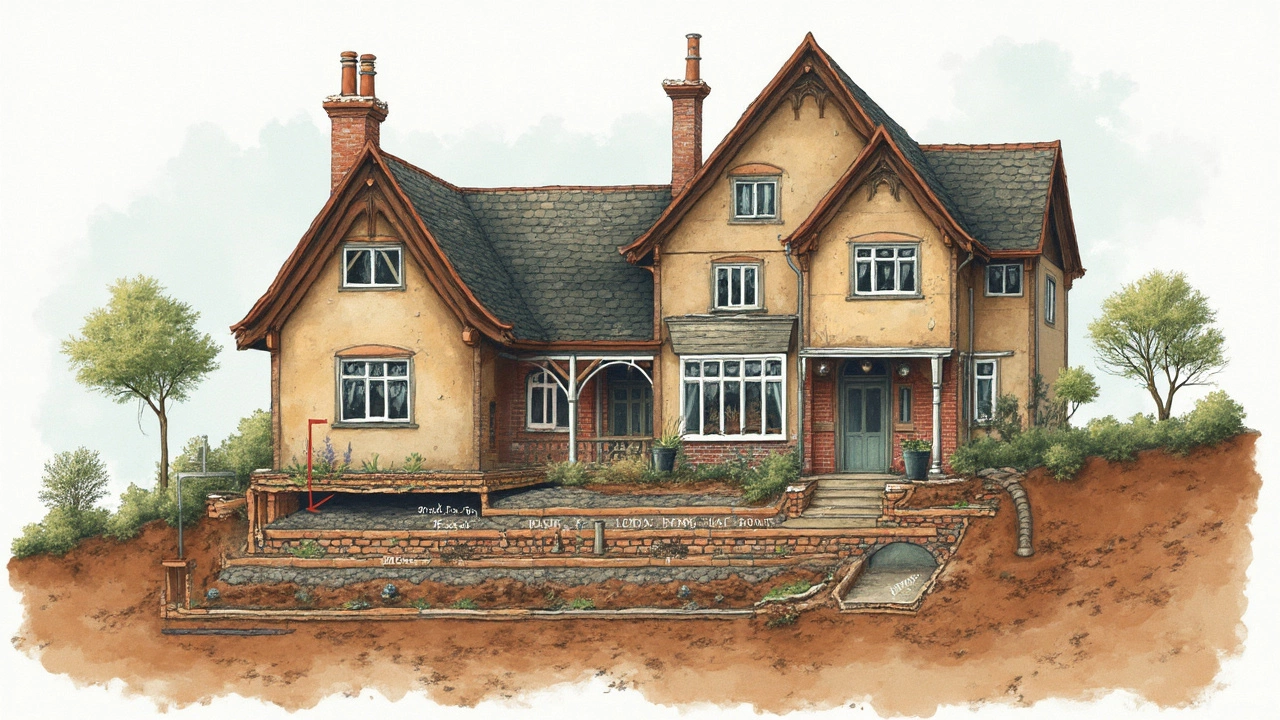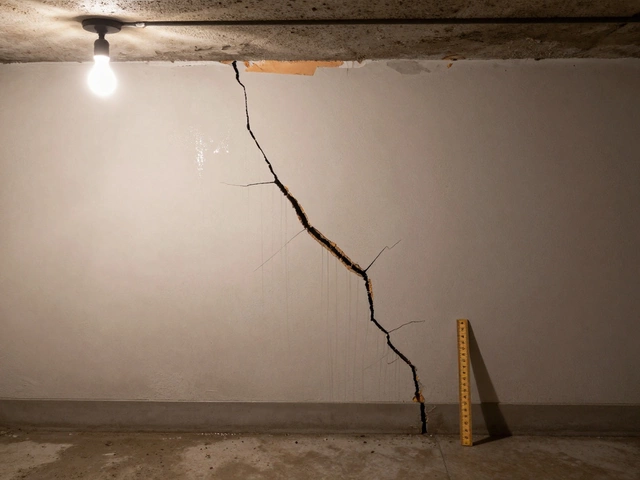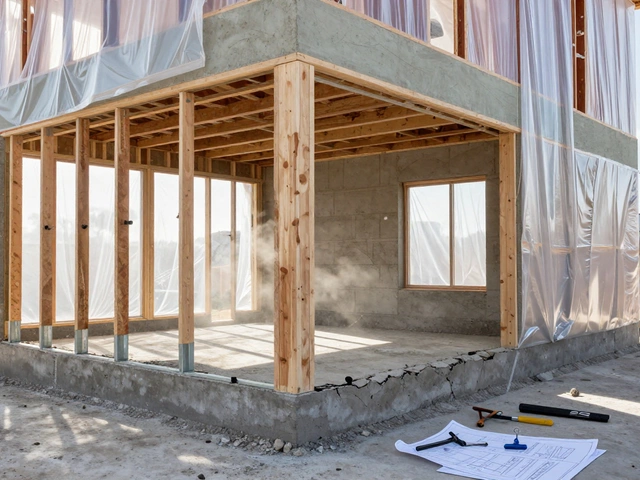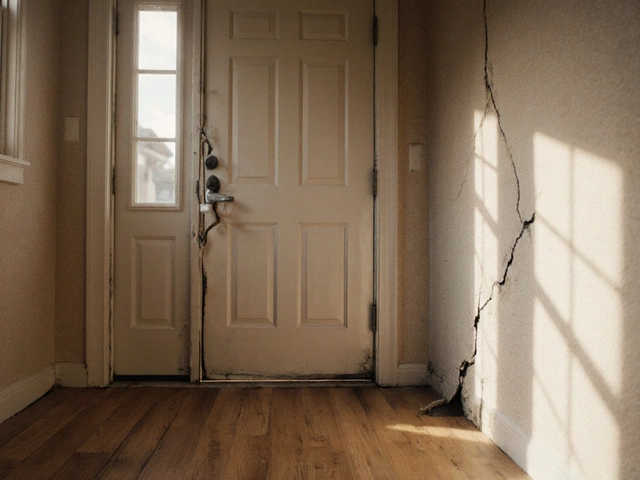Ever looked at a crack in your basement and thought, 'Is this the beginning of the end for my home?' Foundations may seem rock-solid, but they can have problems that might leave you questioning their very fixability. It's not uncommon for homeowners to wonder if their foundation issues can be resolved or if they're stuck with a lawsuit waiting to happen.
First things first, let's talk about the warning signs of a foundation that's in trouble. We all know what small cracks look like, right? But when those lines start to widen and show up everywhere, time to be on high alert! Other red flags include doors getting stubborn, windows refusing to budge, and floors that seem a bit too cozy with gravity. These symptoms aren't just annoying—they're screams from below that something serious might be going on.
Now, onto the big question: are there times when a foundation can't be fixed? Unfortunately, yes. There are situations—like severe water damage, erosion, or even faults in construction—where the cost to repair might outweigh the property's value. But don't panic just yet. Many problems that look dire are still manageable with the right approach and expert advice.
- Signs of a Troubled Foundation
- When Repairs Might Not Be Enough
- Exploring Repair Options
- Preventive Measures to Consider
Signs of a Troubled Foundation
Spotting the signs of a troubled foundation early can save you from expensive repairs down the line. But what exactly should you be looking for? Here’s a breakdown of the usual suspects:
Cracks in the Walls and Floors
Not all cracks are a big deal. However, if you notice stair-step cracks in brickwork, large openings that run horizontally, or cracks wider than 1/4 inch, it’s time to pay attention. These may signal pressure points in your home and indicate potential foundation issues.
Doors and Windows That Stick
When interior doors start sticking or gaps appear at the top of doors, that’s a symptom worth watching. Windows becoming hard to open might also hint that the foundation has shifted. While seasonal changes can affect door frames, consistent issues throughout the year point to a larger problem.
Uneven Floors
Got some sloping or bouncy floors? A level foundation should keep everything steady. Uneven floors could mean settling of the foundation, often due to poor soil conditions.
Separation Between Walls and Ceiling/Floor
Gaps where the wall meets the ceiling or floor can hint at structural trouble. If you have moldings, those popping away from the wall are also suspicious. It's visual evidence that the foundation is no longer holding steady.
Basement and Crawl Space Red Flags
Dampness or water pooling where it shouldn’t be? Bowing walls or columns caving in? These are classic signs of a serious foundation problem. Water's the enemy of foundation repair, and noticing these implies you need to take action before it wreaks havoc.
Reviewing your home for these warning signals periodically is as important as seasonal maintenance. Be proactive in solving small problems before they grow, and when in doubt, consult with a structural engineer to assess the damage and recommend a plan of action.
| Signs | Potential Issues |
|---|---|
| Horizontal Cracks | Pressure or structural failure |
| Stuck Doors and Windows | Foundation shift or settling |
| Uneven Floors | Soil issues affecting the foundation |
| Damp Basements | Water seepage affecting stability |
A little vigilance goes a long way when it comes to your home’s foundation. Identifying these signs early can often mean the difference between a simple fix and more drastic action.
When Repairs Might Not Be Enough
So, you might be wondering, 'Can things get so bad that repair isn't an option?' Sadly, the answer is yes. Even with the toughest foundations, some issues can push them past the point of no return. Let’s dive into when a repair might not cut it.
Structural Damage Beyond Repair
One word: stability. If your foundation has suffered severe structural damage, it's game over for simple fixes. Buildings with large-scale ground movement or significant shifts due to earthquakes might find that foundation repair costs become astronomical and infeasible. It's not just about patching over a problem; sometimes the whole structure needs to be reconsidered.
"In some cases, the cost of repairing a foundation can exceed 50% of the market value of the home. When that happens, it might make more financial sense to rebuild or sell." — John Michaels, Structural Engineer
Failures in Construction
Another common culprit is poor construction practices. Foundations laid with inferior materials or rushed processes are accidents waiting to happen. Sometimes, these fundamental flaws mean that trying to fix it is like putting a band-aid on a broken leg. When inspections reveal major construction faults, the best route might be an extensive rebuild.
Severe Water Damage
- Flood-prone areas face extra challenges. When water infiltrates deeply over time, the material can rot or mold. Combined with soil erosion, weakening your foundation, it could lead to a scenario where repairs aren't cost-effective.
- Homeowners need to weigh not just the repair costs, but potential future damage.
Ultimately, it's a numbers game. When the structural issues significantly affect the home's safety and the investment to restore it isn't justified, it might be time to consider other options. Working with structural engineers can provide a clear picture, offering advice on whether saving or starting fresh serves your best interests.

Exploring Repair Options
So, you've noticed some troubling signs in your foundation and are wondering what can actually be done about it. Thankfully, there are several foundation repair methods out there, each designed to address specific issues. Let's break down some of the go-to fixes that experts often recommend.
1. Sealing Cracks
For minor issues, especially hairline cracks, a sealant might just do the trick. It's a simple process where the cracks are filled with a flexible material to prevent further water intrusion. This isn't a permanent fix, but it can be effective for keeping the problem from escalating.
2. Piering or Underpinning
If your foundation is settling, often seen in older homes, underpinning is one solution. It involves driving steel piers deep into stable soil or bedrock beneath the home. This solid support helps lift and stabilize the foundation. While effective, it can be costly, so weighing the pros and cons is essential.
3. Slab Jacking
Got a sunken slab? Slab jacking, or mudjacking, might be your answer. This involves pumping a mixture under the slab to lift it back to its proper level. It's quicker and cheaper compared to other options, making it a popular choice for uneven concrete areas.
4. Wall Anchors
If foundation walls are bowing or leaning, wall anchors can offer reinforcement. They work by placing anchors in strong soil away from your home, then connecting them to steel rods that are attached to the foundation walls. This process can help straighten walls and add stability.
Of course, choosing the right solution depends on the specific problem and the condition of your home. Consulting with a structural engineer or a foundation specialist is always a smart move. They can assess the situation and suggest the most effective course of action.
| Repair Method | Average Cost |
|---|---|
| Sealing Cracks | $500 - $1,500 |
| Piering | $1,000 - $3,000 per pier |
| Slab Jacking | $500 - $1,300 |
| Wall Anchors | $800 - $2,000 each anchor |
Although foundation repair might seem daunting, there are options to fit different problems and budgets. Don't wait too long to address foundation issues—acting quickly can prevent future headaches and preserve your home's value.
Preventive Measures to Consider
Keeping your foundation stable isn't rocket science, but it does need some attention and care. Let’s break down the smart moves you can make to dodge major foundation headaches in the future.
Manage Your Water
Water is like that unwanted guest who overstays their welcome. Too much of it around your home can spell disaster for your foundation. Ensuring proper drainage is key. Look at those gutters of yours. Are they clear of gunk and directing water far from your home’s base? If not, grab a ladder and get cleaning!
Beyond gutter duty, make sure the ground slopes away from your house, not toward it. This stops water from pooling around the foundation. Consider installing a French drain if water continues to be a nuisance.
Stay on the Lookout for Cracks
Inspect your home regularly for cracks, both inside and out. Minor hairline cracks are usually no biggie, but when they get wide, it might be time to call in a pro for some foundation repair.
Soil and Landscaping
Plants are lovely, but did you know their roots can create havoc for your foundation? Keep large trees planted away from your home. Those thirsty roots can deplete moisture from soil, causing it to contract and destabilize.
Speaking of soil, try not to let it dry out in the hot summer months. A little watering can go a long way in keeping the ground around your house stable.
Be Mindful of Construction
Any renovations or add-ons should be planned with an eye on foundation stability. Too much weight without proper reinforcement can lead to issues. Have a chat with a structural engineer if you're considering major changes.
| Preventive Measure | Effectiveness |
|---|---|
| Proper Gutter Maintenance | High |
| Foundation Crack Monitoring | Medium |
| Tree Placement | High |
| Regular Soil Watering | Low to Medium |
These preventive measures might seem small, but they can make a world of difference in keeping your home secure. Remember, tackling little problems early can save you from big bills down the road!







